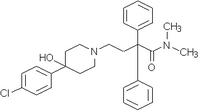Gastrointestinal complaints are common in pregnancy and the postpartum period. They include conditions such as nausea and vomiting, constipation, diarrhea, heartburn, and erosive gastroesophageal reflux disease, which may be treated with the following products:
Antiemetics. Nausea and vomiting is the most frequent GI complaint in pregnancy. A wide range of oral and parenteral antiemetics is available to treat nausea and vomiting of pregnancy (NVP). All are considered low risk for developmental toxicity (growth retardation, structural defects, functional and behavioral deficits, or death). The most commonly prescribed over-the-counter agent for this condition is doxylamine (Unisom), usually combined with vitamin [B.sub.6] (pyridoxine). These two drugs were the components of Bendectin, which was removed from the market by its manufacturer in 1983, but classified by the Food and Drug Administration as safe and effective. Other common oral medications for NVP include prochlorperazine (Compazine), metoclopramide (Reglan), trimethobenzamide (Tigan), promethazine (Phenergan), and ondansetron (Zofran).
Hyperemesis gravidarum, requires intravenous antiemetics, such as droperidol (Inapsine), prochlorperazine, and ondansetron.
Laxatives. There are seven types of products that act as laxatives: saline (phosphates and magnesium hydroxide and its salts), stimulants/irritants (cascara, bisacody1, casanthranol, senna, and castor oil), bulking agents (methylcellulose, polycarbophil, and psyllium), emollient (mineral oil), fecal softeners (docusate), hyperosmotics (glycerin, lactulose), and tegaserod (Zelnorm).
With the exception of lactulose and tegaserod, these products are available over the counter. Most do not cause direct embryo/fetal toxicity. However, castor oil, which is converted to ricinoleic acid in the gut, is an irritant that may induce premature labor. Improper use of saline laxatives can cause electrolyte imbalances, and mineral oil will prevent absorption of fat-soluble vitamins.
Of the laxatives, bulking agents and fecal softeners are the best in pregnancy. Cascara sagrada and senna are excreted into breast milk and are compatible with breast-feeding, although they may cause diarrhea in a nursing infant.
Tesgaserod, a serotonin type-4 receptor agonist, is approved for women with irritable bowel syndrome whose primary bowel symptom is constipation (and for idiopathic constipation in those under age 65). Limited animal and human data suggest a low risk for embryo/fetal toxicity.
Antidiarrheal agents. The antidiarrheal agents diphenoxylate and its active metabolite, difenoxin, are meperidine-related narcotics. Available as Lomotil and Motofen when combined with atropine to prevent abuse, they present low risk in pregnancy. Although there is potential for toxicity in a nursing infant, infrequent use is probably compatible with nursing. Loperamide (Imodium) is low risk in pregnancy and lactation. Alosetron (Lotronex), a serotonin antagonist, has both antiemetic and antidiarrheal properties. It is indicated only in women with IBS whose primary symptom is severe, chronic diarrhea. Based only on animal data, it is considered low risk in pregnancy. Because severe GI toxicity has been reported in adults, it should be avoided during lactation. Bismuth subsalicylate, such as Pepto-Bismol and Kaopectate, should not be used in pregnancy or lactation since metabolism releases salicylate.
Antacids. Types to treat heartburn include calcium carbonate, magnesium hydroxide and oxide, and aluminum hydroxide and carbonate. Since systemic absorption of antacids is negligible, recommended doses are safe in pregnancy and lactation. Sodium bicarbonate should be avoided because it is absorbed systemically and could cause alkalosis.
Antisecretory agents. These agents, used for heartburn and GERD, include the histamine [H.sub.2] antagonists cimetidine (Tagamet), famotidine (Pepcid), nizatidine (Axid), and ranitidine (Zantac) and the proton pump inhibitors esomeprazole (Nexium), lansoprazole (Prevacid), omeprazole (Prilosec), pantoprazole (Protonix), and rabeprazole (Aciphex).
Low strengths of the histamine antagonists are available over the counter, but omeprazole is the only PPI that is available without a prescription. All of these antisecretory agents are low risk in pregnancy. The histamine antagonists are also compatible with breast-feeding. In contrast, the PPIs have carcinogenic and mutagenic properties, so prolonged use during lactation should be avoided.
Misoprostol (Cytotec), another anti-secretory agent and a prostaglandin [E.sub.1] (PG[E.sub.1]) analogue, is a proven human teratogen. It should only be used in pregnancy for its off-label indications: uterine stimulation and cervical ripening.
BY GERALD G. BRIGGS, B. PHARM.
GERALD G. BRIGGS, B.PHARM., is pharmacist clinical specialist, Women's Pavilion, Miller Children's Hospital, Long Beach, Calif.; clinical professor of pharmacy, University of California, San Francisco; and adjunct professor of pharmacy, University of Southern California, Los Angeles. He is also coauthor of the reference book "Drugs in Pregnancy and Lactation."
COPYRIGHT 2005 International Medical News Group
COPYRIGHT 2005 Gale Group



